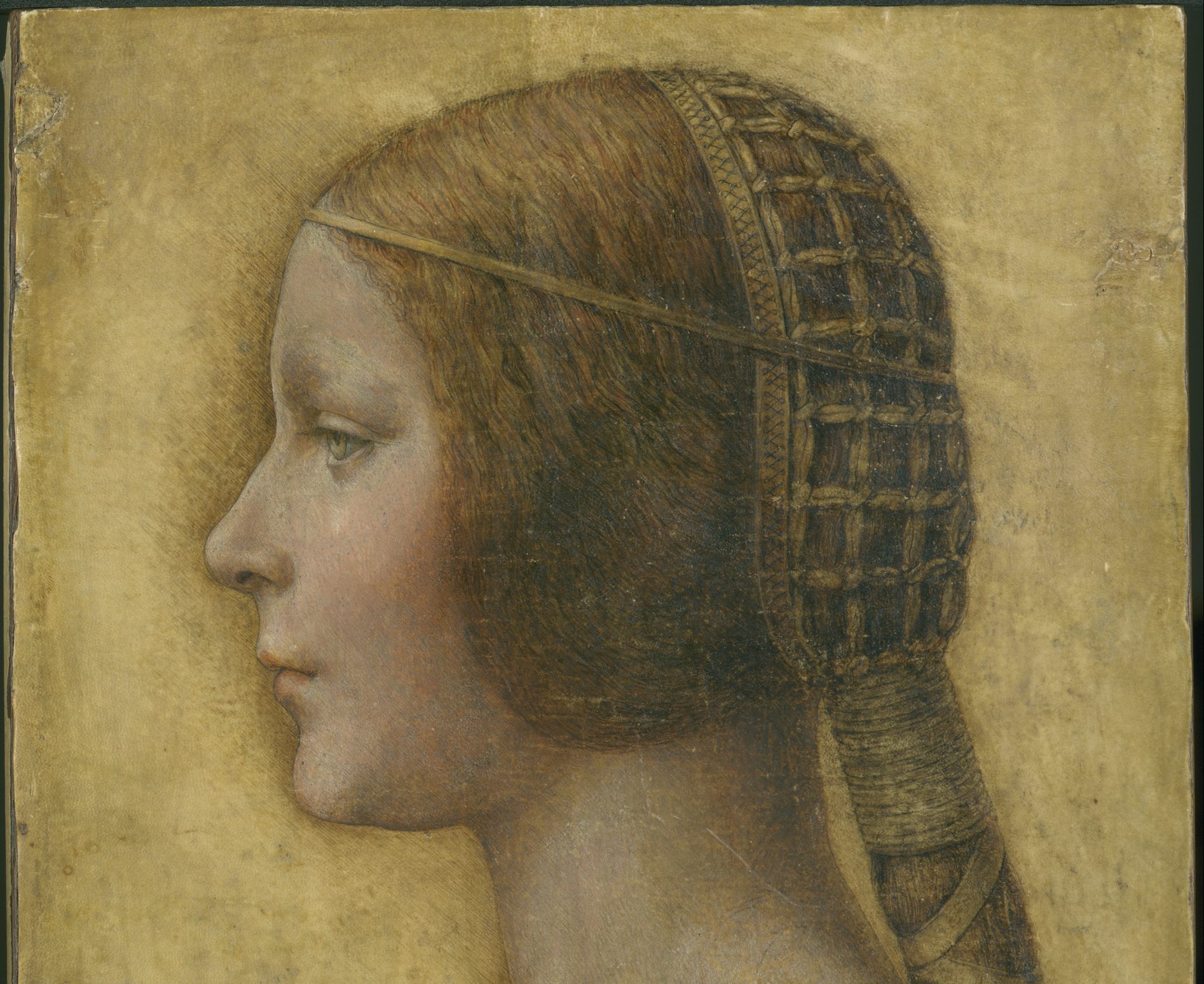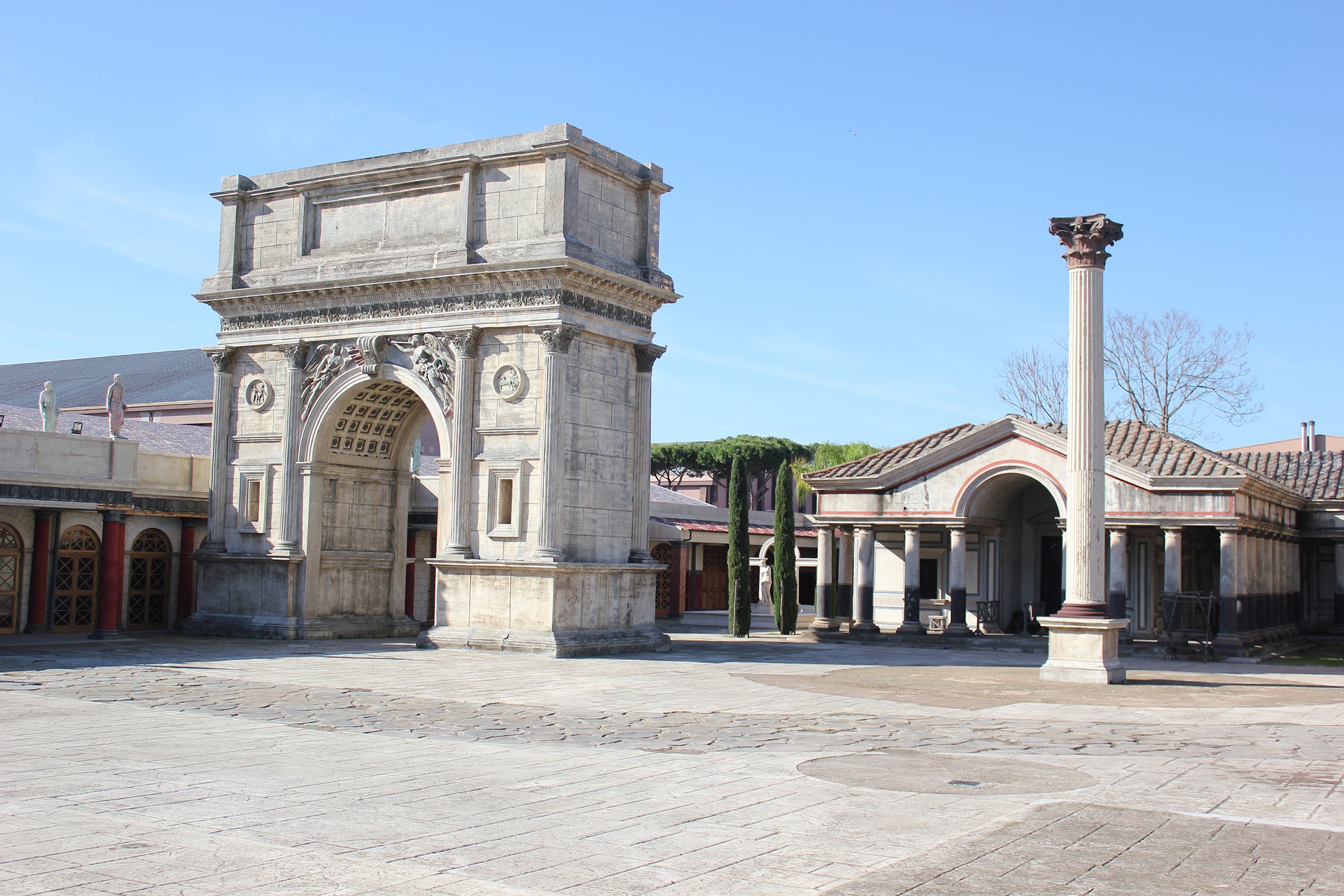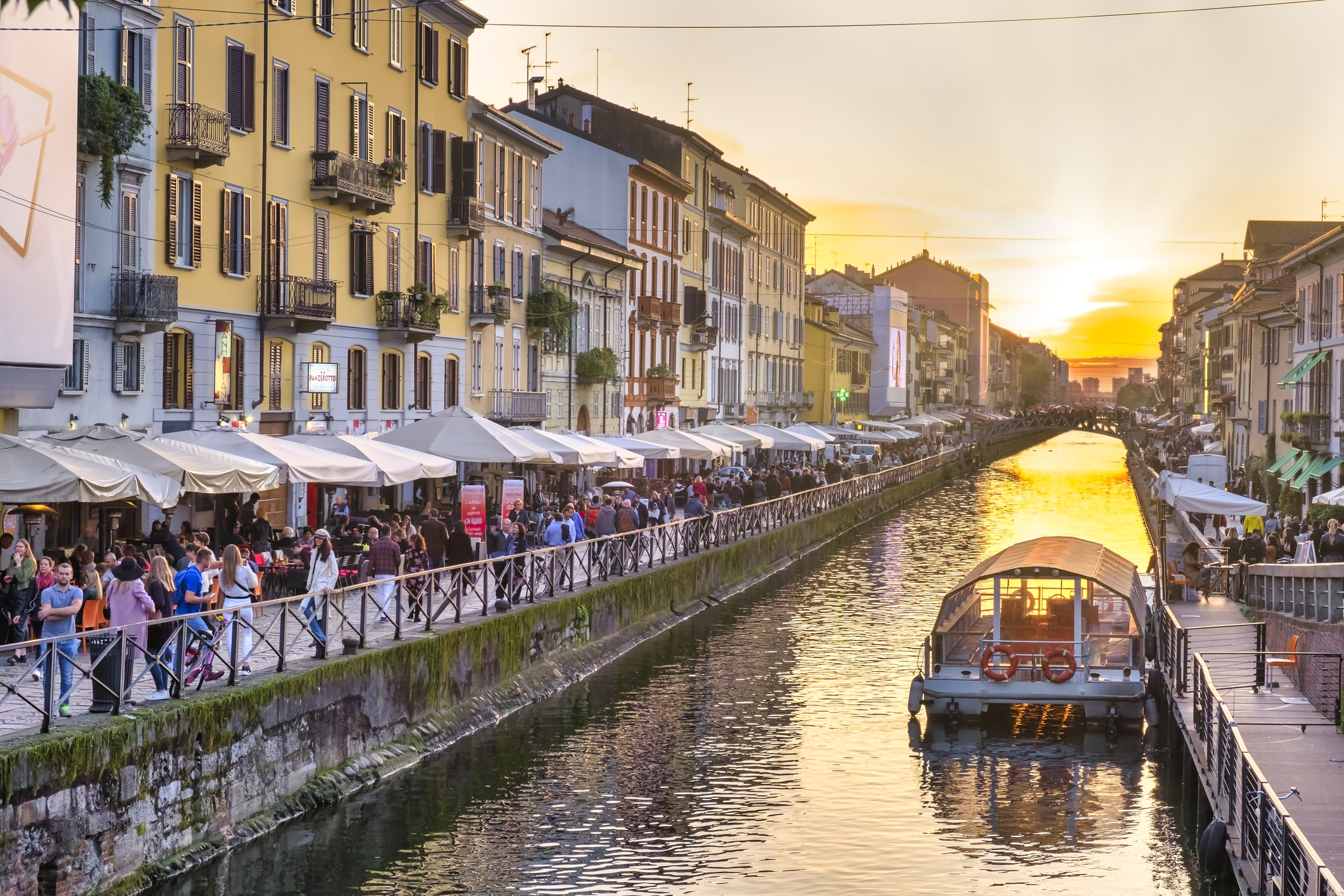The portrait of “La Bella Principessa” (“The Beautiful Princess”), also known as “A Young Fiancée”, is an extraordinary portrait in colored chalks and ink on vellum paper, representing a young lady from Milano in fashionable costume and hairstyle of the 1490s. Following the tradition of Italian artists from the 15th century, the girl is depicted in profile.
This tiny drawing, 33 by 23.9 centimeters, more or less 10 by 9 inches, has a very peculiar story. In 2007 the widow of painter and restorer Giannino Marchig sold it to Canadian collector Peter Silverman, for $19,000 US dollars. Previously the miniature had been attributed to the Italian painter Ghirlandaio, but after Silverman purchased it he enlisted a team of experts to analyze and study the painting. The surprise came when many of them, especially Martin Kemp, who wrote a book on his discovery, attributed the work to Leonardo da Vinci.
Now most art experts believe that the Kemp theory is right, and the little portrait has seen its value increase from $19,000 dollars to 130 million pounds.
This extraordinary rise in value says a lot about the importance of the discovery. Leonardo da Vinci is considered one of the greatest geniuses who ever lived, and one of the most difficult to describe.
According to art historian Helen Gardner, the scope and depth of his interests were without precedent and “his mind and personality seem to us superhuman, the man himself mysterious and remote”.
Indeed Leonardo da Vinci is widely considered to be one of the greatest painters of all time and perhaps the most diversely talented persons ever to have lived. He was a polymath, and if we had to summarize his interests and the fields in which he contributed every time in a brilliant way, we could define him as a painter, sculptor, architect, musician, mathematician, engineer, inventor, anatomist, geologist, cartographer, botanist, and writer.
His genius, perhaps more than that of any other figure, epitomized the Renaissance humanist ideal. Leonardo da Vinci in fact has often been described as the archetype of the Renaissance Man, a man of “unquenchable curiosity” and “feverishly inventive imagination”. But even during the Renaissance, he was ahead of his time. As Marco Rosci described him, his vision of the world was essentially logical rather than mysterious, and the empirical methods he employed were unusual for that era.
Leonardo da Vinci worked in Florence, Milan, Rome, Bologna, and Venice and spent his last years in France. To humanity he left a small number of paintings, only fifteen, together with his notebooks, which contain drawings, scientific diagrams, and his thoughts on the nature of painting.
Leonardo is also revered also for his technological ingenuity. He conceptualized flying machines, an armored vehicle, and concentrated solar power, and outlined a rudimentary theory of plates tectonics.
He also made important discoveries in anatomy, civil engineering, optics, and hydrodynamics.
Unfortunately he didn’t publish his findings so they had no direct influence on later science. Who knows how much more quickly certain discoveries and advancements would have been made if they had .
Now we can understand why “The Bella Principessa” portrait has gained so much value in just a couple years!
The Bella Principessa will be finally exhibited in Italy, precisely in Urbino, from December 6th until January 18th, in the Salone del Trono (Throne Hall) of Palazzo Duca. Then the portrait will arrive in Milano where it will be on display from April 23rd until October together with l’Expo 2015. It’s an extraordinary opportunity not to be missed.































